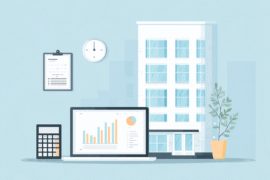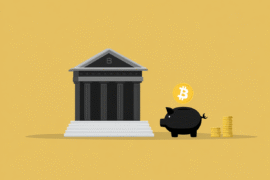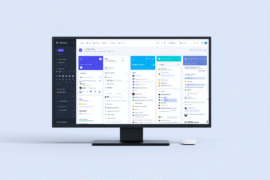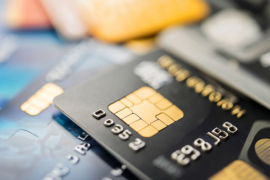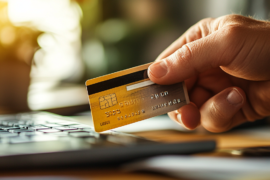This article may contain references to products or services from one or more of our advertisers or partners. We may receive compensation when you click on links to those products or services. Nonetheless, our opinions are our own.
The information presented in this article is accurate to the best of our knowledge at the time of publication. However, information is subject to change, and no guarantees are made about the continued accuracy or completeness of this content after its publication date.
- Introduction
- Understanding the Digital Landscape of Financial Threats
- Recognizing Phishing Scams That Target Your Bank Account
- The Hidden Dangers of Public Wi-Fi: Protecting Your Financial Data
- How Ransomware Can Hijack Your Financial Future
- Keeping Your Personal Information Safe from Identity Theft
- Practical Steps to Strengthen Your Online Financial Security
- Understanding AI-Powered Cyber-Attacks and Their Impact on Financial Security
- The Rise of Insider Threats and How They Compromise Financial Data
- Frequently Asked Questions
- What are the most common online threats to financial security?
- How does phishing work, and how can I protect myself?
- What is malware, and how does it affect my finances?
- What role does social engineering play in financial cybercrime?
- What is identity theft, and how does it impact finances?
- How can I spot fake e-commerce sites?
- What steps can I take to protect my bank accounts from cybercriminals?
- What should I do if I suspect cybercrime?
- What tools can help me stay safe online?
- How does staying informed about online threats help protect my finances?
- Recommended Reads
Introduction
Managing your money is easier than ever. You can send money, pay bills, and shop with just a few clicks without leaving home. However, this convenience also brings significant risks. Cybercriminals continuously find new ways to exploit people, targeting their hard-earned money. Understanding the risks that could threaten your finances is crucial as you bank and shop online. This article explores ten online threats that can harm your financial security and provides essential strategies to protect your finances and future.
Understanding the Digital Landscape of Financial Threats
When you check your bank account or make an online purchase, do you consider the risks? Cybercriminals use various tactics to steal personal information and money. Recognizing these threats is the first step in safeguarding your finances. Some common threats include:
- Phishing Scams: Be cautious with emails that appear legitimate but request personal information. Always verify the sender before sharing sensitive details.
- Malware: This malicious software can infiltrate your devices and steal data without your knowledge.
- Identity Theft: Cybercriminals can use stolen personal information to commit fraud, leading to financial loss.
Recognizing these threats is essential to protecting your finances. Strengthen your security by creating strong passwords, enabling two-factor authentication, and regularly monitoring your accounts.
| Security Measure | Description |
|---|---|
| Strong Passwords | Use unique, complex passwords for each account. |
| Two-Factor Authentication | Add an extra verification step beyond just a password. |
| Regular Monitoring | Frequently review bank statements for unusual activity. |
You can mitigate cyber threats and safeguard your financial assets by staying informed and proactive.
Recognizing Phishing Scams That Target Your Bank Account
Phishing scams are becoming more sophisticated. Watch for these warning signs:
- Unsolicited Emails: Be wary of emails from unknown senders asking you to click links or provide personal information. Legitimate banks never request sensitive details via email.
- Urgent Language: Scammers create a sense of urgency, claiming your account will be locked unless you act immediately.
- Generic Greetings: If an email begins with “Dear Customer” instead of your name, it may be a phishing attempt.
- Suspicious Links: Before clicking, hover over links to check their legitimacy. Avoid clicking if the URL looks suspicious or does not match your bank’s official site.
Legitimate companies use secure login pages and never redirect you to unknown websites. Stay vigilant and verify information with official sources.
Public Wi-Fi is convenient but can expose your financial data to cybercriminals. Hackers often exploit unsecured networks to access sensitive information. Follow these key precautions:
- Use a Virtual Private Network (VPN): A VPN encrypts your internet connection, making it harder for hackers to steal data.
- Stick to Secure Websites: Ensure web addresses begin with “https://” to indicate secure connections.
- Avoid Banking on Public Wi-Fi: Refrain from conducting financial transactions on public networks.
- Keep Software Updated: Regularly update your devices and apps to protect against vulnerabilities.
| Aspect | Secured Wi-Fi | Unsecured Wi-Fi |
|---|---|---|
| Encryption | Yes | No |
| Vulnerability to Hackers | Low | High |
| Access to Sensitive Data | Protected | Exposed |
Taking these precautions can significantly reduce the risk of cyber theft and protect your financial data.
Voted "Best Overall Budgeting App" by Forbes and WSJ
Monarch Money helps you budget, track spending, set goals, and plan your financial future—all in one app.
Get 50% OFF your first year with code MONARCHVIP
How Ransomware Can Hijack Your Financial Future
Ransomware attacks lock users out of their data, demanding payment for restoration. The financial consequences can be severe:
- Loss of Savings: Paying a ransom depletes emergency funds and may not guarantee data recovery.
- Identity Theft: Personal data stolen during attacks can lead to further financial fraud.
- Legal Fees: Businesses may face lawsuits and regulatory penalties if customer data is compromised.
- Increased Insurance Premiums: Cybersecurity insurance costs may rise after an attack, adding to financial strain.
To protect against ransomware, regularly back up data, use strong cybersecurity tools, and avoid clicking on unknown email attachments or links.
Keeping Your Personal Information Safe from Identity Theft
To minimize the risk of identity theft, follow these key strategies:
- Use Strong, Unique Passwords: Avoid reusing passwords across different accounts. A password manager can help you generate and store complex passwords securely.
- Enable Two-Factor Authentication (2FA): This extra security layer ensures that unauthorized access remains difficult even if a password is stolen.
- Monitor Financial Accounts Regularly: Check for unauthorized transactions and report any suspicious activity immediately.
- Consider a Credit Freeze: A credit freeze prevents identity thieves from opening accounts in your name.
| Action | Frequency |
|---|---|
| Review Bank Statements | Monthly |
| Check Credit Reports | Annually |
| Update Passwords | Every 3-6 months |
Being proactive can help prevent identity theft and minimize financial risks.
Practical Steps to Strengthen Your Online Financial Security
Online financial security requires a multi-layered approach. Implement these essential practices:
| Action Item | Benefit |
|---|---|
| Use Strong Passwords | Prevents unauthorized access |
| Enable Two-Factor Authentication | Adds an extra layer of security |
| Monitor Financial Statements | Detects fraud quickly |
| Limit Shared Information | Reduces the risk of identity theft |
By adopting these security measures, you can protect yourself from evolving cyber threats.
Understanding AI-Powered Cyber-Attacks and Their Impact on Financial Security
AI-powered cyber-attacks use artificial intelligence to exploit system vulnerabilities, making them harder to detect. To counter these threats:
- Utilize AI-driven security tools to analyze and block suspicious activity in real time.
- Regularly monitor and update cybersecurity measures.
Financial institutions and individuals must stay ahead by leveraging AI to defend against AI-driven attacks.
The Rise of Insider Threats and How They Compromise Financial Data
Insider threats pose significant risks to financial security. Employees, contractors, or business partners with access to sensitive data can cause data breaches and financial losses. To mitigate these risks:
- Implement strict access controls.
- Use monitoring tools to detect suspicious behavior.
- Conduct regular security training for employees.
Proactive security measures help prevent insider threats before they cause financial harm.
Frequently Asked Questions
What are the most common online threats to financial security?
Phishing scams, malware, ransomware, social engineering attacks, identity theft, and fake e-commerce sites are common threats targeting financial information.
How does phishing work, and how can I protect myself?
Phishing scams trick users into providing personal information. Always verify senders, avoid clicking unknown links, and enable two-factor authentication for added security.
What is malware, and how does it affect my finances?
Malware can steal bank details and financial data without detection. Protect yourself by updating software, using antivirus programs, and avoiding suspicious downloads.
Cybercriminals manipulate victims into revealing sensitive data. Be cautious of unexpected requests for personal or financial information.
What is identity theft, and how does it impact finances?
Identity theft occurs when personal information is stolen and used for fraud. Monitor financial statements and use credit monitoring services to detect unauthorized activity.
How can I spot fake e-commerce sites?
Before making purchases, check for secure payment options, look for a professional website design, verify contact information, and read reviews.
What steps can I take to protect my bank accounts from cybercriminals?
Use strong passwords, enable two-factor authentication, monitor transactions, and avoid public Wi-Fi when accessing banking apps.
What should I do if I suspect cybercrime?
Immediately change passwords, report suspicious activity to your bank, and consider freezing your credit if you suspect identity theft.
What tools can help me stay safe online?
Password managers, VPNs, antivirus software, and cybersecurity education resources can enhance online safety.
How does staying informed about online threats help protect my finances?
Awareness helps you recognize risks, make informed decisions, and develop strong security habits to safeguard your financial future.

Reviewed and edited by Albert Fang.
See a typo or want to suggest an edit/revision to the content? Use the contact us form to provide feedback.
At FangWallet, we value editorial integrity and open collaboration in curating quality content for readers to enjoy. Much appreciated for the assist.
Did you like our article and find it insightful? We encourage sharing the article link with family and friends to benefit as well - better yet, sharing on social media. Thank you for the support! 🍉
Article Title: Online Financial Threats: How to Protect Your Money in 2025
https://fangwallet.com/2025/03/19/online-financial-threats/The FangWallet Promise
FangWallet is an editorially independent resource - founded on breaking down challenging financial concepts for anyone to understand since 2014. While we adhere to editorial integrity, note that this post may contain references to products from our partners.
The FangWallet promise is always to have your best interest in mind and be transparent and honest about the financial picture.
Become an Insider

Subscribe to get a free daily budget planner printable to help get your money on track!
Make passive money the right way. No spam.
Editorial Disclaimer: The editorial content on this page is not provided by any of the companies mentioned. The opinions expressed here are the author's alone.
The content of this website is for informational purposes only and does not represent investment advice, or an offer or solicitation to buy or sell any security, investment, or product. Investors are encouraged to do their own due diligence, and, if necessary, consult professional advising before making any investment decisions. Investing involves a high degree of risk, and financial losses may occur including the potential loss of principal.
Source Citation References:
+ Inspo
There are no additional citations or references to note for this article at this time.






